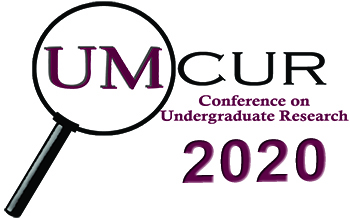Project Type
Presentation
Faculty Mentor’s Full Name
Dr. Kirsten Green-Mink
Faculty Mentor’s Department
Anthropology
Abstract / Artist's Statement
In 2017, John Walden led an excavation of the Tutu Uitz Na intermediate elite center, found in the Maya site of Lower Dover, Belize. He and his team uncovered two burials, designated SG1-BU2 and SG1-BU3. Their initial report claims that there were three individuals, all sacrificially bound and killed within an eastern triadic shrine. In 2019, Dr. Kirsten Green-Mink and Justine Bye, both of the University of Montana, re-analyzed the Tutu Uitz Na burials and performed a comprehensive bioarchaeological analysis. SG1-BU2 was found to contain three individuals – 2 adults and 1 subadult. SG1-BU3 contained one adult, likely of high status as they presented cranial and dental modifications. None of the individuals were found to have any binding material, nor did the layout of the skeletal elements strongly validate a sacrificial theory. We propose that alternative scenarios be considered in explaining the presence of these interments in the Tutu Uitz Na eastern triadic shrine. The purpose of the 2019 analysis is to better explain mortuary behavior and the identities of those interred within the highly ritualized space of the eastern triadic shrine.
Category
Humanities
Re-interpreting a Complex Maya Burial at Tutu Uitz Na
In 2017, John Walden led an excavation of the Tutu Uitz Na intermediate elite center, found in the Maya site of Lower Dover, Belize. He and his team uncovered two burials, designated SG1-BU2 and SG1-BU3. Their initial report claims that there were three individuals, all sacrificially bound and killed within an eastern triadic shrine. In 2019, Dr. Kirsten Green-Mink and Justine Bye, both of the University of Montana, re-analyzed the Tutu Uitz Na burials and performed a comprehensive bioarchaeological analysis. SG1-BU2 was found to contain three individuals – 2 adults and 1 subadult. SG1-BU3 contained one adult, likely of high status as they presented cranial and dental modifications. None of the individuals were found to have any binding material, nor did the layout of the skeletal elements strongly validate a sacrificial theory. We propose that alternative scenarios be considered in explaining the presence of these interments in the Tutu Uitz Na eastern triadic shrine. The purpose of the 2019 analysis is to better explain mortuary behavior and the identities of those interred within the highly ritualized space of the eastern triadic shrine.
